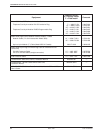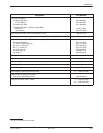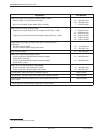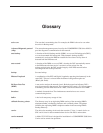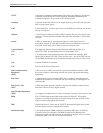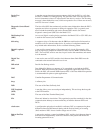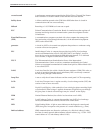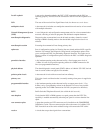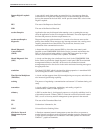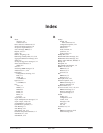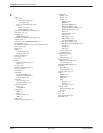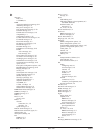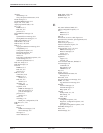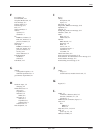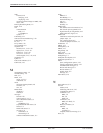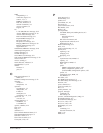
COMSPHERE 3550 Series Data Service Units
Glossary-6 March 1999 3550-A2-GB20-30
Remote Digital Loopback
(RL)
A test typically used when testing an external device. A test message from the
external device is looped back from the receiver to the transmitter in the remote
device, then returned to the local DSU. An RL puts the remote DSU or device into
Digital Loopback.
RTS The state of the Request-to-Send lead.
RXD The state of the Received Data lead.
session disruptive Application data may be disrupted when running a test, or running the test may
cause the application session to be dropped or terminated. The result depends upon
the front-end processor, the time-out parameters, etc.
session-nondisruptive
diagnostics
Diagnostic messages with a duration of .5 seconds or less that are sent over the
primary data channel. These messages may interrupt customer data, causing errors
requiring retransmission of data blocks. They should not, however, cause
termination of the communication session.
Shared Diagnostic
Control Panel
(SDCP)
A feature that allows carrier-mounted DSUs to share the same control panel.
Installed on one COMSPHERE 3000 Series Carrier, it controls and monitors the
DSUs in all the carriers in the cabinet. A single SDCP can control up to eight
carriers, with a total of 128 DSUs and, if present, 128 DBMs.
Shared Diagnostic Unit
(SDU)
A circuit card that plugs into a dedicated slot (slot 0) in the COMSPHERE 3000
Series Carrier to provide the shared diagnostic control panel (SDCP) and network
management interfaces to the DSUs in the carrier. It translates the network
management protocol to the devices in the carrier and routes incoming messages to
the appropriate slots.
standalone The Model 3550 DSU which is designed for desktop operation. A standalone DSU
can be configured as either a control or a tributary.
Time Division Multiplexer
(TDM/Flex)
A circuit card that supports time division multiplexing on two ports, and which can
also increase digital-sharing capability.
training The process of negotiating a communication rate between V.32 modems during call
setup.
transmitter A circuit capable of generating, modulating, and sending a signal for
communication, control, or other purpose.
tributary A DSU or modem that is, for diagnostic purposes, at a logically subsidiary level in
a hierarchical network. Tributary DSUs in a network receive data from the control
DSU, as well as from any network management system present in the network.
TXD The state of the Transmitted Data lead.
UL Underwriters Laboratories, Inc.
USOC Universal Service Ordering Codes.
6700 Series Network
Management System
(NMS)
A Paradyne automated network management system that allows an operator to
monitor network conditions, analyze problems, and take restorative measures from
a single personal computer (PC) workstation. This NMS operates in a Microsoftr
Windowst graphic environment.



